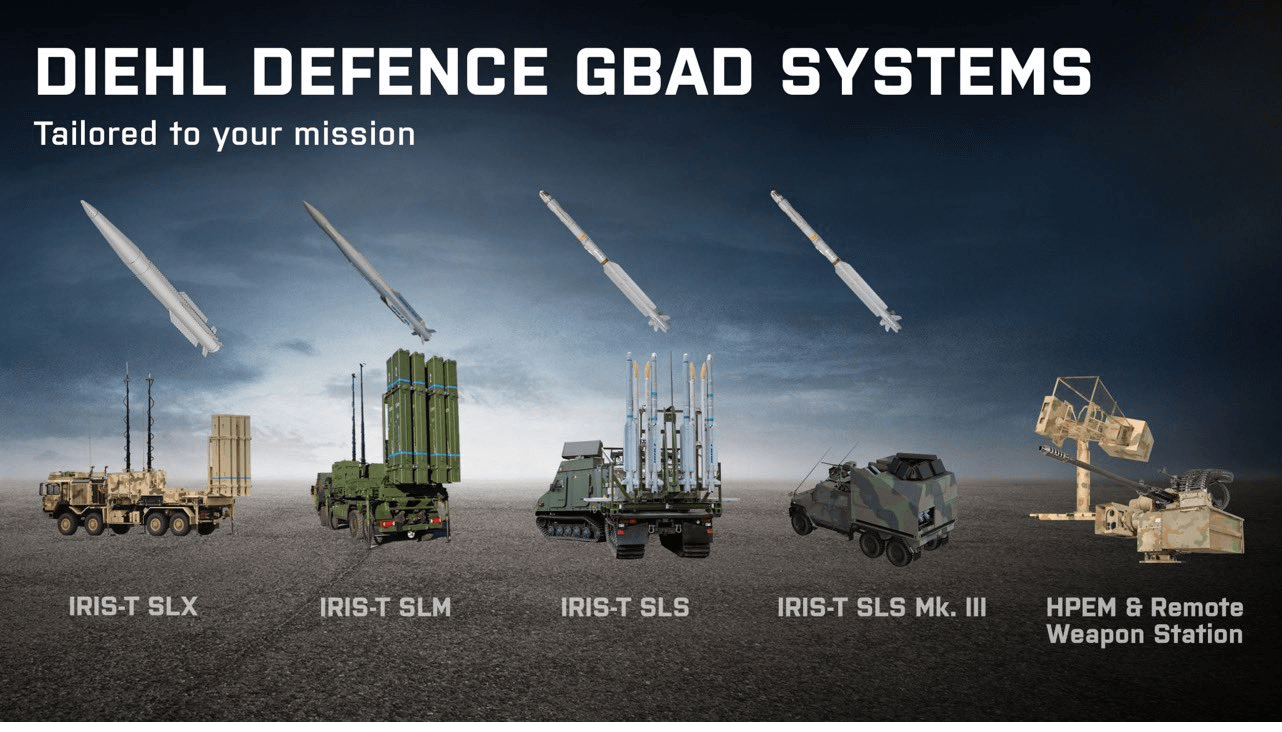Days after Germany delivered only the second IRIS-T air defense system, officers of the Armed Forces of Ukraine (AFU) revealed that the cutting-edge system has shot down over 60 targets since it was first deployed last year.
The commander of the Ukrainian Air Force, Lieutenant General Mykola Oleshchuk, said in a Telegram post on May 3 that a division of the IRIS-T air defense systems had destroyed more than 60 hostile air targets over Ukraine since October 2022, New Voice of Ukraine reported.
He also subsequently shared a video showing the systems in action. Ukrainian officers and military experts also observed that the IRIS-T is a valuable asset as it can share information from its radar with “neighboring” air defense systems. This allows seamless air defense tracking to defuse enemy targets.
“Everyone had a great impression on the first day of using the system,” said another Ukrainian military officer, who goes by the nickname ‘Jeweler’ and is the deputy commander of an anti-aircraft missile unit. “First of all, because they shot all (targets) down.”
Germany delivered the first IRIS-T air defense system to Ukraine in October after a massive Russian missile strike on Ukrainian cities. The first evidence of its deployment was recorded just days after its delivery, with visual evidence doing rounds on social media.
BREAKING: Germany-supplied, Ukrainian IRIS-T Air Defence Division has successfully DESTROYED 60 AIR TARGETS since October 22
-Ukrainian Air Force claims. #IRIST #IRIS #Germany #Ukraine #Russia #Bundeswehr #airdefense #Missile pic.twitter.com/zepkiRRKFN
— EurAsian Times (@THEEURASIATIMES) May 3, 2023
The second IRIS-T air defense system was delivered to Ukraine late last month. The second IRIS-T air defense missile system is part of a new military aid package the German government gave to the Ukrainian armed forces.
With the delivery of IRIS-T to Kyiv last year, Germany led the way for NATO to arm the embattled country with sophisticated air and missile defenses it had been lobbying for. After the IRIS-T, Ukraine finally secured the NASAMS from the US, besides other NATO-grade air defenses.
Last month, Ukraine’s air defense fleet got a massive shot in the arm as it deployed the formidable PAC-3 Patriot missile and air defense systems. According to reports, the first Patriot air defense batteries were activated for combat duty on April 23, whereas a second battery was deployed on April 27.
As for the IRIS-T, it has been praised by Ukrainian operators ever since it was first deployed in combat. Earlier, the Ukrainian military said in January that the IRIS-T successfully downed every incoming target during Ukraine’s first operational use of the system, as reported by EurAsian Times.

At the time, a Ukrainian anti-aircraft missile technician Vadym claimed to have successfully intercepted all nearby targets while maintaining the system. Vadym claimed that after operating the Buk-M1 air defense system for Ukraine, he underwent training on the IRIS-T in Germany.
“The German system is modern, powerful, and effective. Even during its baptism of fire in October, it shot down all targets, mostly cruise missiles”, he explained.
IRIS’T’s combat efficacy has been lauded in Ukraine as videos surfaced on social media showing the system in action. Videos have shown how these missiles have engaged and destroyed highly advanced Russian missiles like the Kalibr amid a heavy Russian barrage.
Earlier this year, a Ukrainian soldier told Reuters, “Our air force commander said IRIS-T has hit 51 out of 51 targets; that’s a 100% quota for Shahed drones and cruise missiles.” The IRIS-T has been tasked with shooting down the deadly Shahed-136 kamikaze drones unleashed by Moscow.

Germany’s IRIS-T Air Defense System
According to Diehl Defense, a typical single IRIS-T SLM system consists of three mobile launchers, a truck-mounted multi-function radar, and another truck modified into a command post vehicle.
The truck-mounted missile system is intended to take down combat aircraft, attack helicopters, drones, anti-radar missiles, cruise missiles, bombs, and drones. It also includes a multipurpose radar that can track multiple targets at once.
The imaging infrared (IIR) seeker on the missile provides a high-precision terminal approach with a high probability of a direct hit. When the interceptor missile is close enough to engage, its infrared imaging seeker acquires the target for the final phase of the engagement. The interceptor missile is guided toward its target using a data link.
Since the missiles are so new, little is known about their performance or how they work. The testing on the system was finished only two years ago, in 2021. According to reports, it can be deployed in a third of the time it takes for the Patriot missile system, giving Ukraine valuable time to destroy approaching cruise missiles and suicide drones.

The former German defense minister announced that Kyiv would get at least three of these air defenses in 2023. IRIS-T manufacturer Deihl claims that pairing it with the US-made Patriot PAC-3 missile defense system with a higher maximum altitude will maximize its effectiveness.
While the system’s current location is unknown, this system has been extensively deployed to take down the Shahed-136 kamikaze drones and cruise missiles fired by Moscow. With Russia’s missile and drone attack refusing to abate, the IRIS-T could be believed to be working round-the-clock to protect Ukrainian skies.
Impressed by the combat performance of the IRIS-T air defense system, media reports indicated that Germany had also planned to purchase eight more IRIS-T air defense systems for its armed forces.
- Contact the author at sakshi.tiwari9555 (at) gmail.com
- Follow EurAsian Times on Google News




